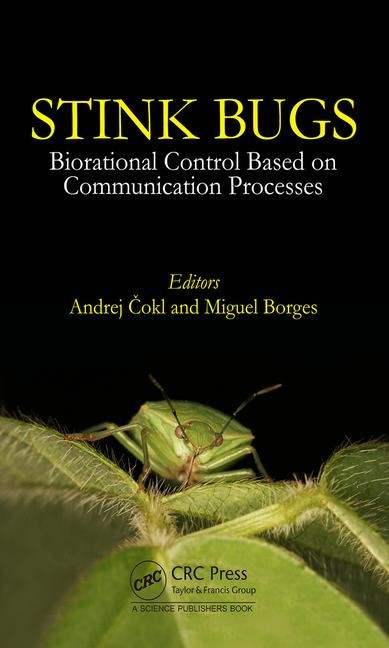Book shows results of Brazil-Slovenia cooperation in the biological control of stinkbugs
Book shows results of Brazil-Slovenia cooperation in the biological control of stinkbugs
The researchers from Embrapa Genetic Resources and Biotechnology, Miguel Borges, and from the National Institute of Biology of Slovenia, Andrej Čolk, are the authors of the book "Stinkbugs: Biorational Control Based on Communication Processes" , published by CRC Press, a publisher of the British group Taylor & Francis. The book presents a general analysis on the stinkbugs from the Pentatomidae family, which encompasses the species that are most harmful to several agricultural crops, such as soybean and maize, among others, including aspects of their biology, evolutionary history and nutritional ecology. The main goal of the book is to show the results obtained by the institutions towards the biological control of such pests based on studies that relate insect communication processes to their reproductive behavior. The authors present technologies based on the communication among stinkbugs, with potential applications in agriculture for the management of pest species.
Since the 1990s, the researcher Miguel Borges has been investing in research to better understand the insects' communication processes in order to monitor their behavior in croplands. Just like human beings, insects also communicate to “inform” each other about the risk of predators, to mark territory, feed themselves and also to reproduce. Except that, instead of words, they use chemical signals (that can be scents and sounds) called semiochemicals. When they are used within the same species, they receive the name of pheromones.
The focus of the research carried out at Embrapa is stinkbugs' sexual pheromones, that is, the chemical signals that they use to reproduce. Scientists isolate such substances in labs and put them in traps in the farms to “confuse” the insects and hinder reproduction. The goal is to reduce the use of chemical insecticides in integrated pest management, as part of the corporation's broader strategy of developing sustainable solutions that can reduce pest attacks to Brazilian croplands, simultaneously helping growers, the population, and the environment.
Cooperation resulted in the only laboratory of Brazil for studies on auditory communication between insects
The partnership between the researchers Miguel Borges and Andrej Čolk started in 2002, when the Slovenian researcher visited Embrapa as a consultant, with the proposal to establish a laboratory to study vibrational communication between stinkbugs.
"Fifteen years ago, we had a vision that it would be possible to use this form of communication in pest management", comments Borges, recalling that this was the initial step for the implementation of a laboratory for studies of stinkbug bioacoustics, with funds from CNPq and FAPDF, which is the only one in Brazil.
The visit of the Slovenian researcher also resulted in the publication of 10 papers in the area of insect bioacoustics and in the training of undergraduate, graduate and post-doc students.
Nowadays, other research institutions have added new challenges to the partnership, such as the State University of Mato Grosso (UNEMAT), with which a system to record and reproduce stinkbug sound signals is being developed to be used in the fields.
The publication of the book is another fruit of the successful partnership between the researchers, in collaboration with 16 specialists from different national and international institutions. "The work condenses information from research results obtained throughout 30 years of dedication to the study of stinkbug communication processes and constitutes another step of such fruitful cooperation, as it makes Embrapa a pioneer and puts it in the international spotlight in this research area", Borges celebrates.
The book is available for purchase at the publisher CRC Press' web page: https://www.crcpress.com/Stinkbugs-Biorational-Control-Based-on-Communication-Processes/Cokl-Borges/p/book/9781498732802
Translation: Mariana de Lima Medeiros
Fernanda Diniz (MTb 4685/89)
Embrapa Genetic Resources and Biotechnology
cenargen.nco@embrapa.br
Phone number: +55 61 3448-4768
Further information on the topic
Citizen Attention Service (SAC)
www.embrapa.br/contact-us/sac/

